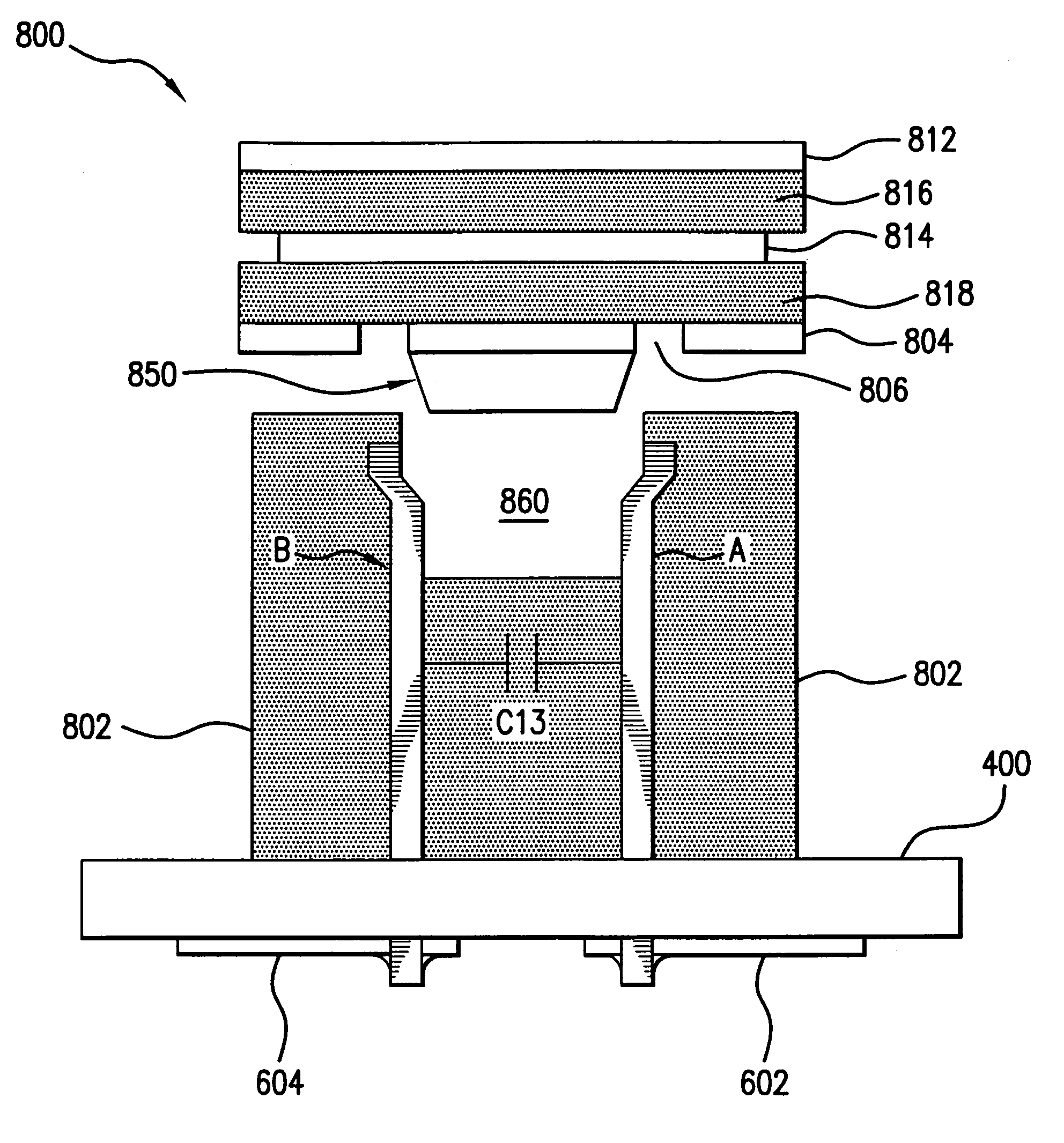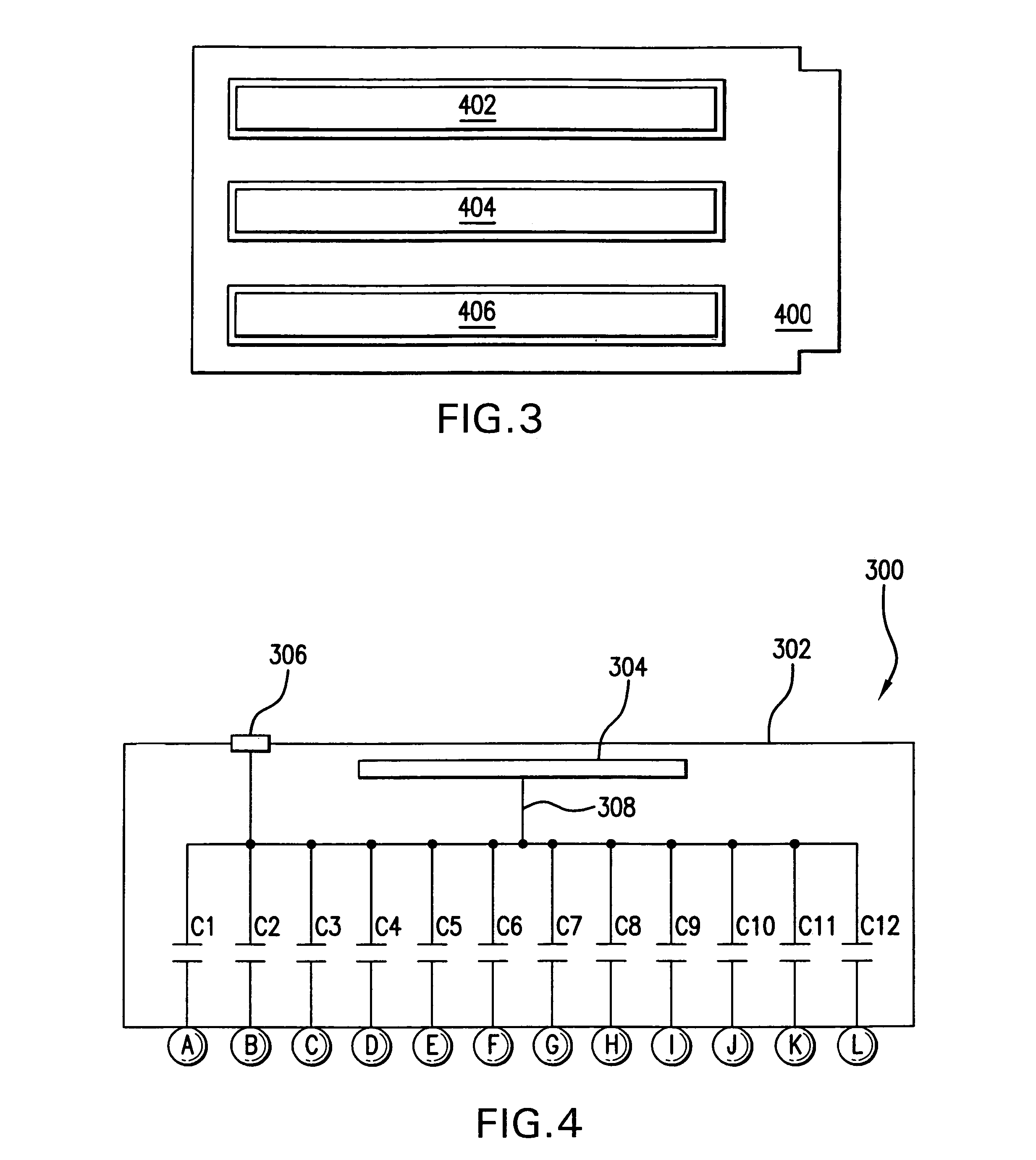Method and apparatus for non-contact testing and diagnosing electrical paths through connectors on circuit assemblies
a technology of electrical paths and connectors, which is applied in short-circuit testing, resistance/reactance/impedence, instruments, etc., can solve problems such as “open” defects, interference with the success of capacitive lead-frame testing, and lack of capacitive coupling between an ic lead-frame and a tester's sense pla
- Summary
- Abstract
- Description
- Claims
- Application Information
AI Technical Summary
Benefits of technology
Problems solved by technology
Method used
Image
Examples
Embodiment Construction
[0025]The United States patent application of Kenneth P. Parker, et al. entitled “Methods and Apparatus for Testing Continuity of Electrical Paths Through Connectors of Circuit Assemblies”, USPTO Ser. No. 10 / 683,693, filed Oct. 9, 2003, is hereby incorporated by reference and discloses how to determine whether defects exist in one or more of a plurality of electrical paths through sockets or other connectors.
[0026]One exemplary apparatus disclosed in the afore-mentioned patent application is shown in FIGS. 3 and 4. FIG. 3 illustrates a circuit assembly 400 comprising connectors 402, 404, 406 for receiving random access (RAM) modules, mother boards, daughter board, memory cards, etc. FIG. 4 illustrates a first exemplary embodiment of a device 300 for testing continuity of electrical paths through connectors 402, 404 and 406 of a circuit assembly 400. By way of example, the device 300 is configured to test electrical paths of connectors 402, 404 and 406 on circuit assembly 400, shown ...
PUM
 Login to View More
Login to View More Abstract
Description
Claims
Application Information
 Login to View More
Login to View More - R&D
- Intellectual Property
- Life Sciences
- Materials
- Tech Scout
- Unparalleled Data Quality
- Higher Quality Content
- 60% Fewer Hallucinations
Browse by: Latest US Patents, China's latest patents, Technical Efficacy Thesaurus, Application Domain, Technology Topic, Popular Technical Reports.
© 2025 PatSnap. All rights reserved.Legal|Privacy policy|Modern Slavery Act Transparency Statement|Sitemap|About US| Contact US: help@patsnap.com



